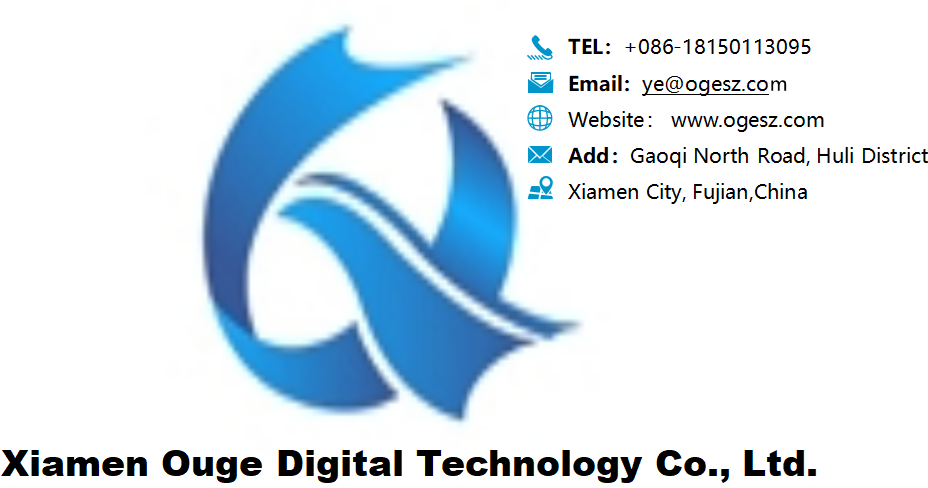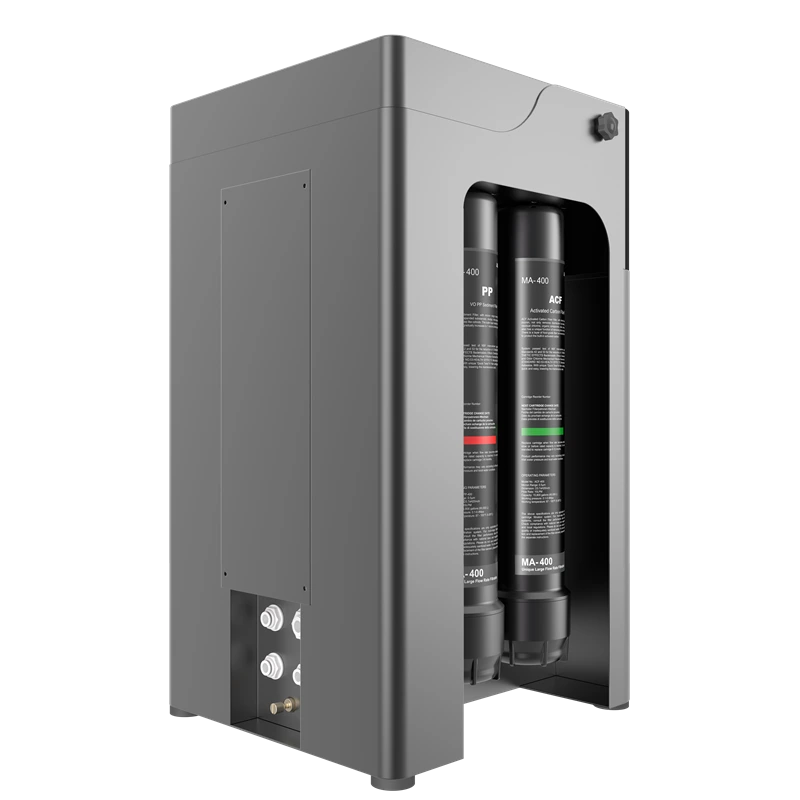Stop randomly selecting water purifiers! One article to understand, choose correctly and use with peace of mind
In today's world where quality of life is increasingly valued, drinking water health has become a focal point for every household. When you turn on the tap, that seemingly clear tap water actually harbours hidden dangers. From the source to your home, the lengthy delivery process—compounded by ageing pipes and secondary contamination—can introduce harmful substances like rust, silt, bacteria, heavy metals, and residual chlorine into your water. This is precisely why a reliable water purifier is essential. But with the ever-growing array of purifiers flooding the market, how do you choose? And how can you ensure your purifier performs at its best? Today, we delve into the intricacies of water purifiers.

I. What types of water purifiers exist?
Ultrafiltration Water Purifiers
With a filtration precision of approximately 0.01 microns, these act like a fine mesh, effectively intercepting rust, silt, colloids, bacteria, and large organic molecules from water. Its advantage lies in preserving beneficial minerals and trace elements while operating without electricity and producing minimal wastewater, resulting in low running costs. However, ultrafiltration systems struggle with dissolved heavy metal ions, viruses, and pesticide residues—smaller molecular contaminants. For regions with relatively clean tap water where the primary goal is removing coarse impurities and improving taste, ultrafiltration presents a sound option.
RO Reverse Osmosis Water Purifier
The filtration precision of RO reverse osmosis membranes is nothing short of remarkable, reaching 0.0001 microns. This means that apart from water molecules, the vast majority of impurities in water—such as bacteria, viruses, heavy metals, limescale, residual chlorine, and various organic compounds—are effectively blocked. The resulting water is virtually pure, achieving an exceptionally high level of purity. In areas with poor water quality—such as regions suffering from severe heavy metal contamination or high levels of limescale—RO reverse osmosis water purifiers serve as a reliable safeguard for drinking water safety. Naturally, they do have some minor drawbacks: they require electricity to power the pump that pressurises the water to force it through the reverse osmosis membrane, they produce a certain amount of wastewater, and the cost of replacing the filter cartridges is relatively high.
Nanofiltration Water Purifiers
Emerging as the new contender in water purification, nanofiltration systems operate at a filtration precision between ultrafiltration and RO reverse osmosis, typically around 0.001 microns. They effectively remove most bacteria, viruses, heavy metals, and organic compounds while retaining beneficial minerals like calcium and magnesium ions. This approach yields water that is not only pure but also retains nutritional value and a refreshingly sweet taste. However, as nanofiltration technology is relatively new, products on the market tend to be priced higher, and actual filtration effectiveness may vary between brands.
Activated Carbon Water Purifiers
Activated carbon possesses a highly porous structure with exceptional adsorption capabilities. Activated carbon water purifiers primarily utilise activated carbon filter cartridges to adsorb residual chlorine, odours, colourants, and certain organic compounds from water, effectively improving its taste and smell. However, its filtration function is relatively limited, offering little defence against contaminants like bacteria, viruses, and heavy metals. It is generally not used alone but paired with other filter types as an auxiliary filtration method to enhance overall purification efficacy.

II. How to Select the Right Water Purifier for Your Home?
Assess Your Water Quality
If your local water is hard, evidenced by thick limescale deposits forming on kettle bases during boiling, this indicates high calcium and magnesium ion content. Prioritise RO reverse osmosis systems or water purifiers with softening capabilities. If water appears cloudy with visible impurities, an ultrafiltration system pre-fitted with a PP cotton filter effectively removes larger particles. Should water carry a persistent chlorine taste, activated carbon filters are particularly noteworthy for adsorbing residual chlorine.
Budget Considerations
Water purifiers range from several hundred to tens of thousands of yuan; selection should align with financial capacity. For limited budgets, ultrafiltration systems offer affordability with low maintenance costs. Those with ample resources seeking ultimate water quality should opt for RO reverse osmosis systems, which provide comprehensive drinking water safety despite higher initial and ongoing expenses.
Consider household needs
Households with elderly members, children, or expectant mothers require heightened water safety standards. High-precision RO reverse osmosis or nanofiltration systems are the preferred choice. For households where members enjoy brewing tea or coffee and prioritise water taste, nanofiltration systems that preserve minerals and enhance flavour are suitable. If daily water consumption is substantial, focus on the system's flow rate and select a high-capacity model to meet the entire household's needs.
Understanding Filter Replacement Costs
The filter is the heart of the water purifier; regular replacement ensures proper functioning and effective filtration. Replacement cycles and costs vary by filter type. RO reverse osmosis filters require relatively frequent replacement at a higher cost. Ultrafiltration filters
Understanding Filter Replacement Costs
The filter cartridge is the heart of a water purifier; regular replacement ensures its proper functioning and effective filtration. Replacement cycles and costs vary across different purifier types. Reverse osmosis (RO) filters require relatively frequent replacement at a higher cost, whereas ultrafiltration (UF) filters have longer replacement intervals and lower expenses. Before purchasing, always clarify the replacement cycle and cost with the supplier. Calculate the long-term usage cost to avoid exceeding your budget later.

Check Brand Reputation and Certifications
Prioritise well-known brands with strong reputations, as these typically offer greater assurance in research, manufacturing processes, and quality control. Additionally, verify that products hold relevant certifications, such as water-related approvals from the National Health Commission or NSF (National Sanitation Foundation) certification. Certified products are more reliable in terms of safety and filtration efficacy.
III. Common Misconceptions About Water Purifier Usage
Misconception 1: Water Purifiers Offer a Permanent Solution
Many assume that installing a water purifier guarantees perpetual water quality assurance. In reality, as filter cartridges accumulate impurities over time, their filtration efficiency diminishes. Failure to replace cartridges promptly not only compromises purification but may also cause trapped bacteria and contaminants to be released back into the water, leading to secondary contamination. Different filter types require varying replacement intervals: PP cotton filters typically last 3–6 months, activated carbon filters 6–12 months, ultrafiltration membranes 1–2 years, and RO reverse osmosis membranes 2–3 years. Always consult the product manual for precise specifications.
Misconception Two: Water from purifiers is safe to drink without restriction
RO reverse osmosis purifiers produce purified water containing almost no minerals. Long-term, excessive consumption may lead to deficiencies in trace elements. Therefore, even with a purifier, it is inadvisable to drink solely filtered water. It is recommended to supplement with mineral-rich natural water to maintain bodily trace element balance. Moreover, even when the system is functioning correctly, residual stagnant water may linger in pipes when first turning on the tap. It is advisable to let the water run for several seconds before collecting it for consumption.
Misconception Three: Wastewater is worthless water
RO reverse osmosis systems generate wastewater during operation, which many perceive as water wastage. In reality, this wastewater is not entirely useless; it simply contains higher levels of impurities and salts compared to purified water. This water can be collected for secondary use in tasks like mopping floors, flushing toilets, or watering plants, achieving both environmental sustainability and cost savings. Moreover, with technological advancements, many modern RO reverse osmosis systems now feature significantly reduced wastewater ratios, delivering notable water-saving benefits.

IV. Essential Tips for Daily Water Purifier Maintenance
Regular Filter Replacement
The importance of replacing filters has been emphasised repeatedly above, as this is crucial for ensuring the water purifier functions correctly and maintains water quality safety. To avoid forgetting replacement dates, consider affixing a note to the purifier detailing the installation date and next replacement date, or setting reminders on your mobile device. When replacing filters, strictly follow the product manual; improper handling may lead to issues such as leaks.
Regularly Flush the Water Purifier
Some water purifiers feature an automatic flushing function that partially cleans impurities from the filter surface. Nevertheless, manual flushing is recommended periodically, particularly for ultrafiltration systems. To manually flush, open the purifier's drain valve and allow water to flow rapidly through. This effectively removes trapped impurities, extending the filter's lifespan. The flushing frequency should be determined based on local water quality. In areas with poorer water quality, flush 1-2 times per month; in areas with better water quality, flush once per quarter.
Consider the installation environment
The water purifier should be installed in a dry, well-ventilated, and shaded location, avoiding direct sunlight. Sunlight exposure can cause the proliferation of microorganisms such as algae in the water, contaminating the internal pipes and filter cartridges of the purifier. Additionally, position it away from heat sources to prevent high temperatures from affecting component performance and lifespan. The installation location should also facilitate water connection, drainage, and future maintenance or filter replacement.
Monitor water quality changes
During regular use, pay close attention to the quality of water produced by the purifier. Should you notice any unusual odours, abnormal colouration, or sediment in the water, this may indicate a malfunction or the need for filter replacement. Cease use immediately and contact a professional repair technician or the manufacturer's after-sales service for inspection and repair. Additionally, periodically test the TDS (Total Dissolved Solids) value of the output water from RO reverse osmosis purifiers using a TDS pen. Under normal conditions, the reading should be below 50ppm. Excessively high readings may indicate diminished filtration effectiveness.
Procedure for Extended Non-Use
Should the purifier remain unused during prolonged absences, flush it thoroughly before resuming operation. First, open the mains tap and allow water to run for several minutes to clear impurities from the pipes. Subsequently, open the purifier tap and let water flow continuously for 10–15 minutes to expel any stagnant water that may harbour bacteria. Only consume the water once its safety has been confirmed.
Selecting a suitable water purifier and maintaining it correctly will ensure it serves as your household's faithful guardian of drinking water health. We hope today's guide provides a comprehensive understanding of water purifiers, enabling you to choose a model that meets your needs and enjoy healthy, pure drinking water.

 Reverse Osmosis Scaling Right After Startup? Here's What You Need to Know About Prevention and Treatment!
Reverse Osmosis Scaling Right After Startup? Here's What You Need to Know About Prevention and Treatment!
 Reverse Osmosis Scaling Right After Startup? Here's What You Need to Know About Prevention and Treatment!
Reverse Osmosis Scaling Right After Startup? Here's What You Need to Know About Prevention and Treatment!
 Three Certain Trends in Commercial Water Purification Over the Next Five Years
Three Certain Trends in Commercial Water Purification Over the Next Five Years
 Eight Different Methods for Pure Water Treatment Equipment Processes
Eight Different Methods for Pure Water Treatment Equipment Processes